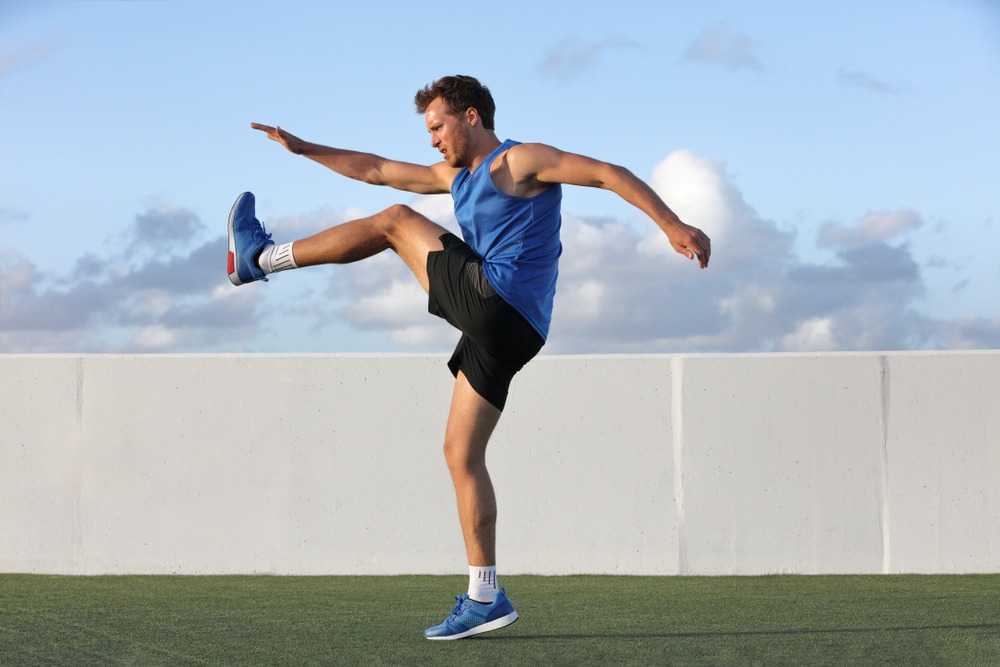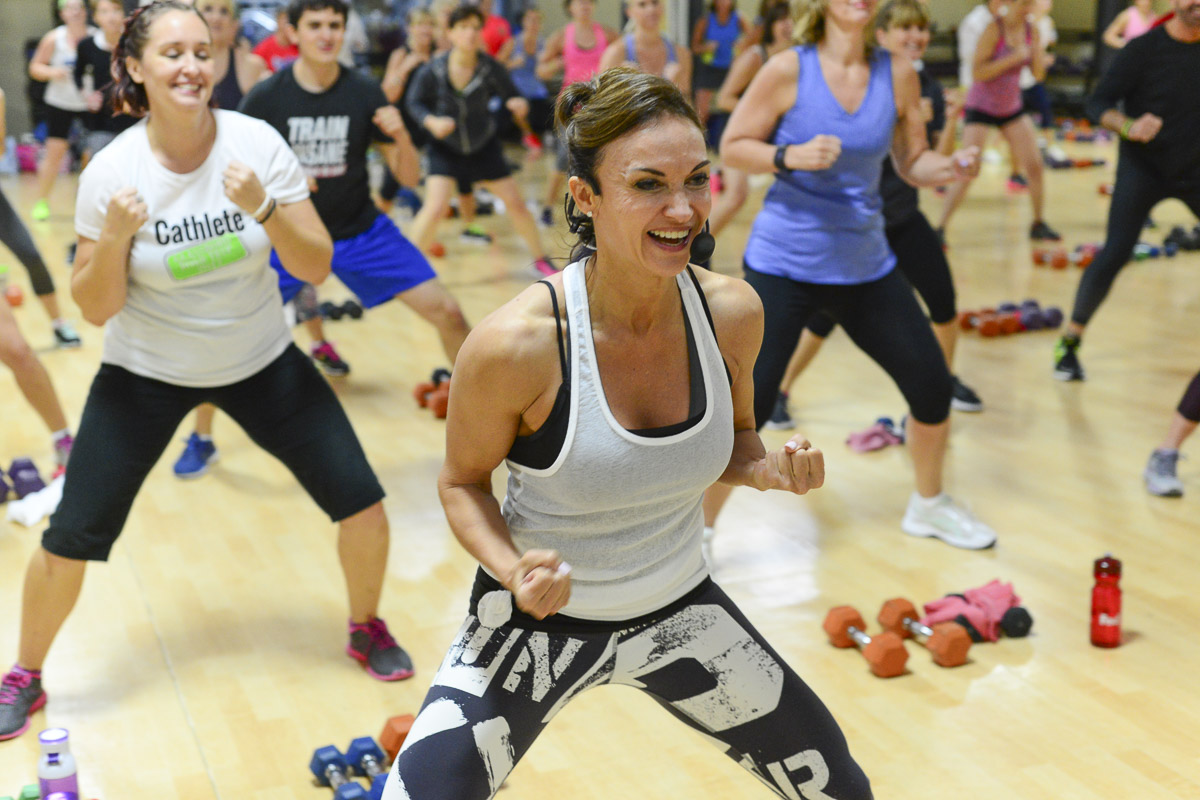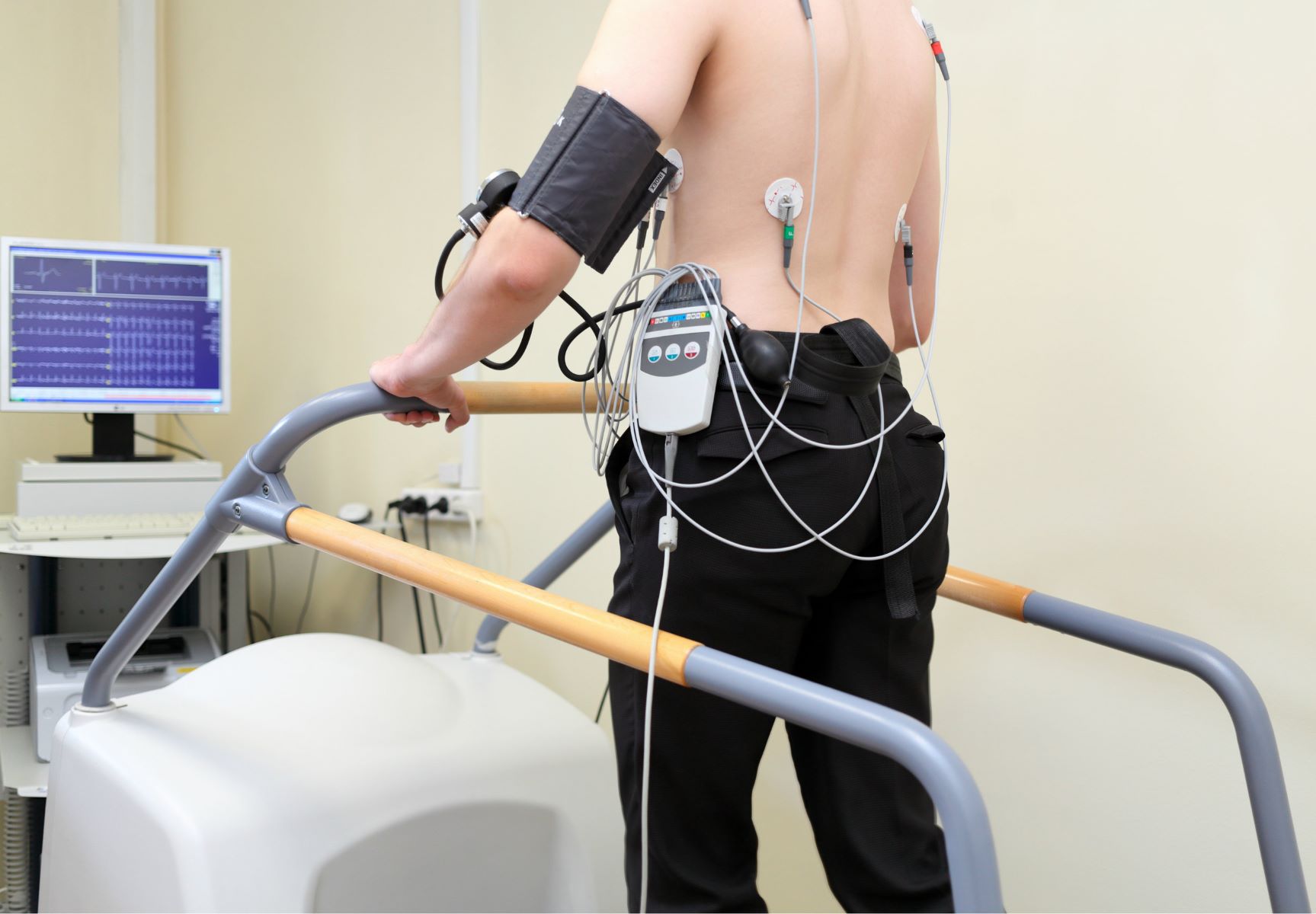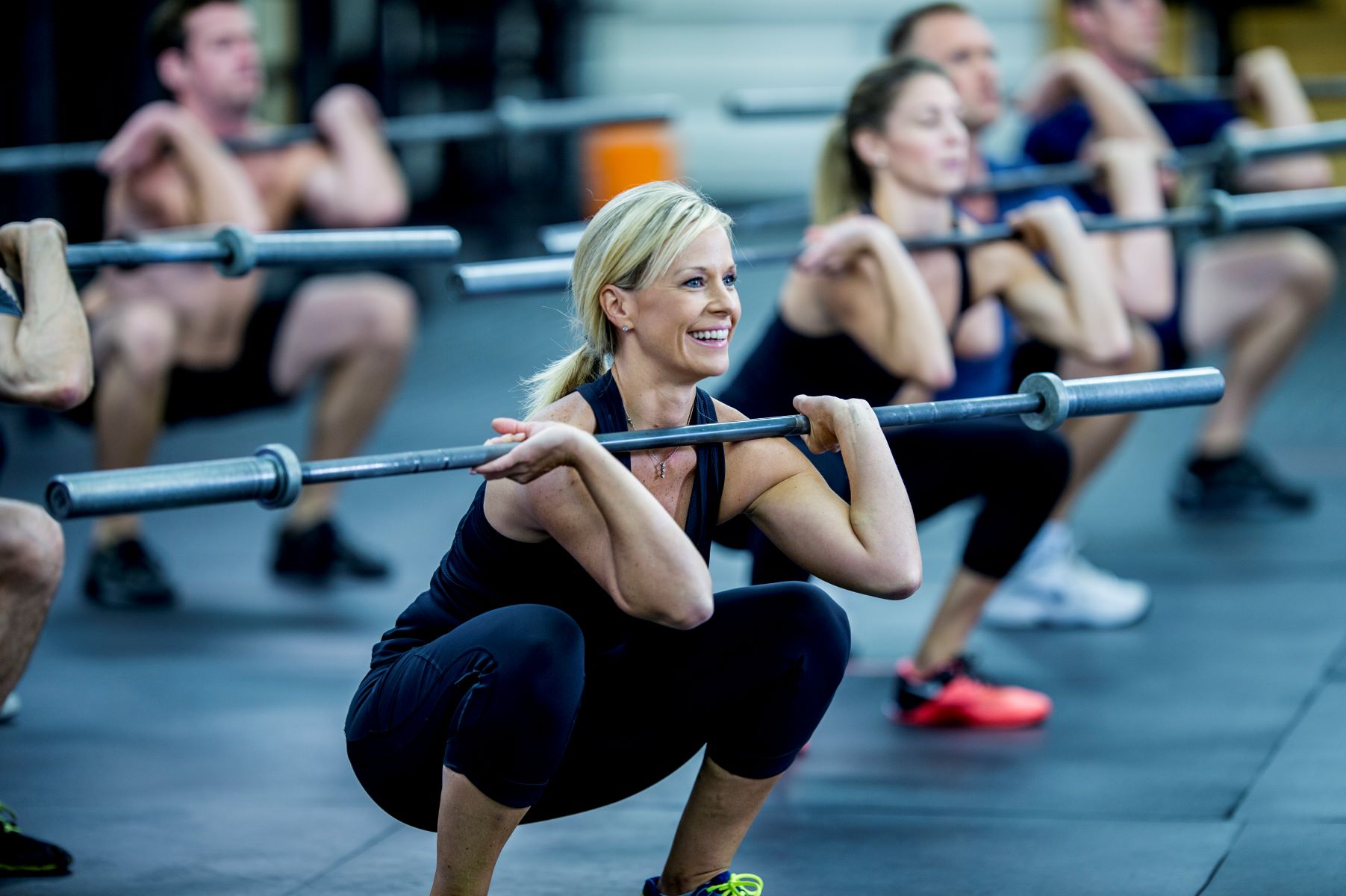Home>Misc>Featured>How Long Does It Take To Improve Cardiovascular Fitness


Featured
How Long Does It Take To Improve Cardiovascular Fitness
Modified: August 21, 2023
Featured: Discover how long it takes to improve cardiovascular fitness and reap the benefits of a healthier heart and increased endurance.
Introduction
Cardiovascular fitness is a key component of overall health and well-being. It refers to the efficiency with which your heart, lungs, and blood vessels transport oxygen to your muscles during physical activity. Improving cardiovascular fitness can lead to numerous health benefits, including increased stamina, better heart health, and improved mental well-being.
Regular exercise and physical activity are essential for enhancing cardiovascular fitness. However, many people are often unsure about how long it takes to see improvements in their cardiovascular endurance. The rate of improvement can vary depending on several factors, such as individual fitness levels, exercise routine, genetics, and lifestyle factors.
In this article, we will explore the factors that affect the rate of improvement in cardiovascular fitness and provide an overview of typical timeframes for seeing progress. We will also discuss strategies to accelerate progress, the benefits of improved cardiovascular fitness, and common mistakes to avoid in your fitness journey.
Whether you are a beginner looking to start a fitness routine or an experienced athlete seeking to enhance your endurance, understanding the timeline for improving cardiovascular fitness can help guide and motivate you on your journey towards optimal health.
Understanding Cardiovascular Fitness
Cardiovascular fitness, also known as cardiorespiratory fitness, is a measure of how well your heart, lungs, and blood vessels work together to supply oxygen-rich blood to your muscles during physical activity. It is an essential component of overall fitness and plays a vital role in maintaining good health.
When you engage in aerobic activities like running, swimming, or cycling, your cardiovascular system is put to the test. The heart pumps more blood, and the lungs take in more oxygen to provide fuel to the working muscles. The more efficient your cardiovascular system is, the better your body can perform these tasks.
One way to measure cardiovascular fitness is through VO2 max, which is the maximum amount of oxygen your body can use during intense exercise. A higher VO2 max indicates a higher level of cardiovascular fitness. However, it is important to remember that cardiovascular fitness is not solely determined by VO2 max but also by factors like heart rate recovery, blood pressure, and overall endurance.
Improving cardiovascular fitness is crucial because it enhances your body’s ability to deliver oxygen and nutrients to your muscles efficiently. This increased efficiency allows you to perform physical activities for longer periods without feeling fatigued and out of breath. It also improves your body’s ability to recover quickly after physical exertion.
Regular aerobic exercise, such as brisk walking, jogging, or swimming, is the most effective way to improve cardiovascular fitness. Aim for at least 150 minutes of moderate-intensity aerobic activity or 75 minutes of vigorous-intensity aerobic activity per week, along with muscle-strengthening exercises on two or more days per week.
By understanding the importance of cardiovascular fitness and the role it plays in overall health, you can make informed decisions about incorporating appropriate exercises into your fitness routine. Now that we have a clear understanding of cardiovascular fitness, let’s delve into the factors that can affect the rate of improvement in this area.
Factors Affecting the Rate of Improvement
The rate at which you can improve your cardiovascular fitness can vary from person to person. Several factors influence how quickly you will see progress in this area. Understanding these factors can help you set realistic expectations and make adjustments to your fitness routine as needed. Here are some key factors that can affect the rate of improvement in cardiovascular fitness:
- Starting Fitness Level: Your initial fitness level plays a significant role in determining how quickly you can improve your cardiovascular fitness. If you are starting from a relatively low fitness level, you may experience faster improvements in the beginning stages of your fitness journey.
- Genetics: Genetic factors can also impact your rate of improvement. Some individuals may have a naturally higher aerobic capacity or a genetic predisposition for endurance activities, allowing them to improve their cardiovascular fitness more quickly.
- Consistency: Consistency is key when it comes to improving cardiovascular fitness. Regular, sustained exercise over time will yield better results compared to sporadic or inconsistent workouts. Aim for a consistent exercise schedule that suits your lifestyle and stick to it.
- Exercise Intensity: The intensity of your workouts plays a crucial role in the rate of improvement. Higher-intensity exercises, such as interval training or high-intensity interval training (HIIT), can lead to faster improvements in cardiovascular fitness compared to lower-intensity activities.
- Diet and Lifestyle: Your diet and lifestyle habits can either support or hinder your progress. Eating a balanced diet and maintaining a healthy weight can improve your cardiovascular fitness. Additionally, factors like adequate sleep, managing stress, and avoiding tobacco and excessive alcohol consumption can positively impact your overall health and fitness.
- Age: Age can affect the rate of improvement in cardiovascular fitness. Older individuals may experience slower progress compared to younger individuals due to natural age-related changes in the body. However, regular exercise can still yield significant improvements in cardiovascular fitness, regardless of age.
- Health Conditions: Certain health conditions, such as cardiovascular diseases or respiratory disorders, may impact the rate of improvement in cardiovascular fitness. It is important to consult with a healthcare professional to determine the appropriate exercise program based on your individual health status.
Keep in mind that these factors are not definitive limitations. With determination, consistency, and appropriate adjustments, individuals can make significant improvements in their cardiovascular fitness regardless of their starting point. In the next section, we will discuss the typical timeframes for seeing progress in cardiovascular fitness.
Typical Timeframes for Improving Cardiovascular Fitness
The timeline for improving cardiovascular fitness can vary depending on several factors, including your starting fitness level, commitment to regular exercise, and the intensity of your workouts. While there is no set timeframe that applies to everyone, understanding these general guidelines can help you track your progress and set goals for improvement.
Typically, it takes around 4-8 weeks of consistent exercise before you start noticing significant improvements in your cardiovascular fitness. In the early stages, you may experience increases in your endurance levels, as well as improved breathing patterns and heart rate response during exercise.
Within 4-6 months, you can expect more substantial improvements in your cardiovascular fitness. Your heart and lungs become more efficient at supplying oxygen to your muscles, and your overall stamina and endurance increase. You may find that you can exercise for longer periods of time or at higher intensities without feeling as fatigued.
After 6 months of consistent exercise, your cardiovascular fitness will continue to improve, but the rate of improvement may slow down. It’s important to switch up your exercise routine and continue challenging yourself to keep making progress.
Keep in mind that these timeframes are approximate and can vary from person to person. Some individuals may experience faster improvements, while others may need more time to see significant changes. It is crucial to listen to your body and progress at a pace that feels comfortable for you.
Additionally, it’s important to remember that cardiovascular fitness is an ongoing process. Once you have reached a certain level of fitness, it is important to maintain and continue challenging yourself to prevent plateauing. Incorporating variety in your workouts and gradually increasing the intensity or duration of your exercises can help you continue to improve your cardiovascular fitness over time.
Now that we have discussed the typical timeframes for improving cardiovascular fitness, let’s explore some strategies that can help you accelerate your progress and reach your fitness goals faster.
Strategies for Accelerating Progress
If you are looking to accelerate your progress in improving cardiovascular fitness, there are several strategies you can implement. These strategies can help you challenge your body, increase the intensity of your workouts, and continue progressing towards your fitness goals. Here are some effective ways to accelerate your progress:
- Interval Training: Incorporate interval training into your workouts. This involves alternating between high-intensity exercise and periods of active recovery. This method has been shown to improve cardiovascular fitness more rapidly than steady-state exercises.
- Increase Exercise Intensity: Gradually increase the intensity of your workouts as your fitness levels improve. This could involve adding more resistance, increasing the speed, or incorporating more challenging exercises into your routine.
- Vary Your Workouts: Keep your exercise routine varied and interesting. Try different types of activities, such as swimming, cycling, or group fitness classes, to engage different muscle groups and prevent boredom.
- Include Strength Training: Incorporate strength training exercises into your routine. Building muscle can enhance your overall performance and increase your metabolic rate, leading to more efficient cardiovascular fitness.
- Set Specific Goals: Set specific and measurable goals for your cardiovascular fitness. This could include aiming to run a certain distance in a specific time or completing a challenging cycling route. Having clear goals can help motivate you and track your progress.
- Track Your Progress: Use fitness trackers or apps to monitor your progress. Record your exercise duration, heart rate, and distance covered to track improvements and make adjustments to your workouts as needed.
- Listen to Your Body: Pay attention to your body’s signals and adjust your workouts accordingly. Push yourself, but also give yourself enough rest and recovery to avoid overtraining and injuries.
- Maintain a Healthy Diet: Fuel your body with a well-balanced diet that includes plenty of fruits, vegetables, lean proteins, and whole grains. Proper nutrition can support your exercise routine and promote overall cardiovascular health.
- Stay Consistent: Consistency is key when it comes to accelerating progress. Stick to a regular exercise routine and make it a habit. Even small, consistent efforts can lead to significant improvements over time.
Remember, everyone’s fitness journey is unique, and progress may vary. It is important to find strategies that work best for you and your individual needs. By implementing these strategies and staying focused on your goals, you can accelerate your progress and achieve the cardiovascular fitness level you desire.
Benefits of Improved Cardiovascular Fitness
Improving cardiovascular fitness offers a multitude of benefits that extend beyond just physical health. Regular aerobic exercise and improved cardiovascular endurance can have a positive impact on various aspects of your well-being. Here are some key benefits of improving cardiovascular fitness:
- Enhanced Heart Health: Regular cardiovascular exercise improves the strength and efficiency of your heart, reducing the risk of heart disease and other cardiovascular conditions. It can also help lower blood pressure and cholesterol levels.
- Increased Stamina and Endurance: As your cardiovascular fitness improves, you’ll notice an increase in stamina and endurance. Everyday activities become easier, and you can engage in physical activities for longer periods without feeling fatigued.
- Weight Management: Engaging in regular aerobic exercise can aid in weight management. It helps burn calories, promotes the preservation of lean muscle mass, and boosts your metabolism, leading to improved weight control and body composition.
- Mental Well-being: Cardiovascular exercise releases endorphins, which are known as “feel-good” hormones that boost mood and reduce symptoms of anxiety and depression. It can also enhance cognitive function and improve overall mental well-being.
- Improved Energy Levels: Regular cardiovascular workouts improve the delivery of oxygen and nutrients to your muscles, enhancing energy production and overall energy levels. You’ll feel more energized throughout the day, even during periods of prolonged activity.
- Better Sleep: Regular exercise, including cardiovascular workouts, can improve sleep quality. It helps regulate your body’s internal clock and promotes deeper and more restful sleep, leading to improved overall health and well-being.
- Reduced Stress: Physical activity, particularly cardiovascular exercise, is a natural stress reliever. It stimulates the production of endorphins and helps combat the effects of stress hormones, leading to reduced feelings of stress and improved mental resilience.
- Longevity: Regular aerobic exercise and improved cardiovascular fitness have been linked to a longer lifespan. It reduces the risk of chronic diseases and age-related health conditions, contributing to a higher quality of life as you age.
These benefits highlight the importance of prioritizing cardiovascular fitness in your overall fitness routine. By consistently engaging in aerobic activities and improving your cardiovascular endurance, you can enjoy improved physical health, enhanced mental well-being, and an overall better quality of life.
Common Mistakes to Avoid
When it comes to improving cardiovascular fitness, it’s important to be aware of common mistakes that can hinder your progress. By avoiding these pitfalls, you can optimize your workouts and achieve better results. Here are some common mistakes to avoid:
- Skipping Warm-up and Cool-down: Neglecting to warm up before exercise and cool down afterward can increase the risk of injury and muscle soreness. Take the time to properly warm up your muscles and gradually ease into your workout, and don’t forget to cool down and stretch afterward.
- Overtraining: While consistency is important, overtraining can do more harm than good. Pushing yourself too hard without allowing adequate rest and recovery can lead to injuries, burnout, and reduced progress. Listen to your body and give yourself enough time to recover between intense workouts.
- Not Varying Your Workout: Doing the same exercise routine day after day can lead to a plateau in your progress. It’s important to incorporate variety into your workouts to challenge different muscle groups and prevent boredom.
- Incorrect Form: Performing exercises with incorrect form can increase the risk of injury and reduce the effectiveness of your workouts. Take the time to learn proper technique or consult a fitness professional to ensure you are performing exercises correctly.
- Setting Unrealistic Goals: Setting unrealistic goals can lead to frustration and disappointment. Be realistic about your starting point and the rate of progress you can expect. Set achievable goals that can be accomplished through consistent effort and dedication.
- Ignoring Strength Training: Cardiovascular exercise should be complemented with strength training. Building and maintaining muscle mass is crucial for overall fitness and can enhance your cardiovascular performance. Incorporate strength training exercises into your routine at least two days a week.
- Neglecting Proper Nutrition: Proper nutrition is essential for fueling your workouts and supporting recovery. Neglecting to eat a balanced diet that includes adequate carbohydrates, proteins, and healthy fats can negatively impact your energy levels and hinder your progress.
- Not Listening to Your Body: It’s important to listen to your body and respect its limitations. Pushing through pain or fatigue can lead to injuries and setbacks. Take rest days when needed and modify your workouts if you’re feeling unwell or fatigued.
- Comparing Yourself to Others: Each person’s fitness journey is unique, and progress can vary. Comparing yourself to others can lead to feelings of inadequacy or discouragement. Instead, focus on your own progress and celebrate your achievements, no matter how small they may seem.
Avoiding these common mistakes can help optimize your efforts and set you up for success in improving your cardiovascular fitness. By staying mindful of these pitfalls, you can make the most out of your workouts and achieve your fitness goals effectively.
Conclusion
Improving cardiovascular fitness is a worthwhile endeavor that brings about a wide range of benefits for your overall health and well-being. Whether you are a beginner or an experienced fitness enthusiast, understanding the factors that affect the rate of improvement and implementing strategies to accelerate progress can help you achieve your fitness goals.
Cardiovascular fitness is not achieved overnight, and the rate of improvement can vary from person to person. It takes time, dedication, and consistency to see significant changes. By incorporating regular aerobic exercise, increasing intensity, and maintaining a healthy lifestyle, you can improve your heart health, increase stamina, reduce stress, and enhance your overall quality of life.
It is essential to avoid common mistakes like overtraining, neglecting strength training, setting unrealistic goals, and not listening to your body. By staying mindful of these pitfalls, you can optimize your workouts and minimize the risk of injuries or setbacks.
Remember that improving cardiovascular fitness is not a one-time achievement, but an ongoing journey. As you progress, set new goals, continue challenging yourself, and maintain a balanced approach to fitness and nutrition. Celebrate your accomplishments, no matter how small, and enjoy the positive impact that improved cardiovascular fitness brings to your life.
So, lace up your sneakers, find activities you enjoy, and embark on this journey to improve your cardiovascular fitness. With patience, persistence, and a focus on maintaining a healthy lifestyle, you can make significant strides in your cardiovascular fitness and enjoy the numerous rewards it brings.









